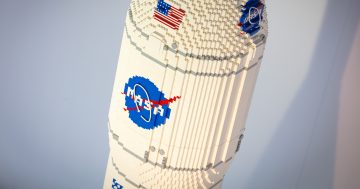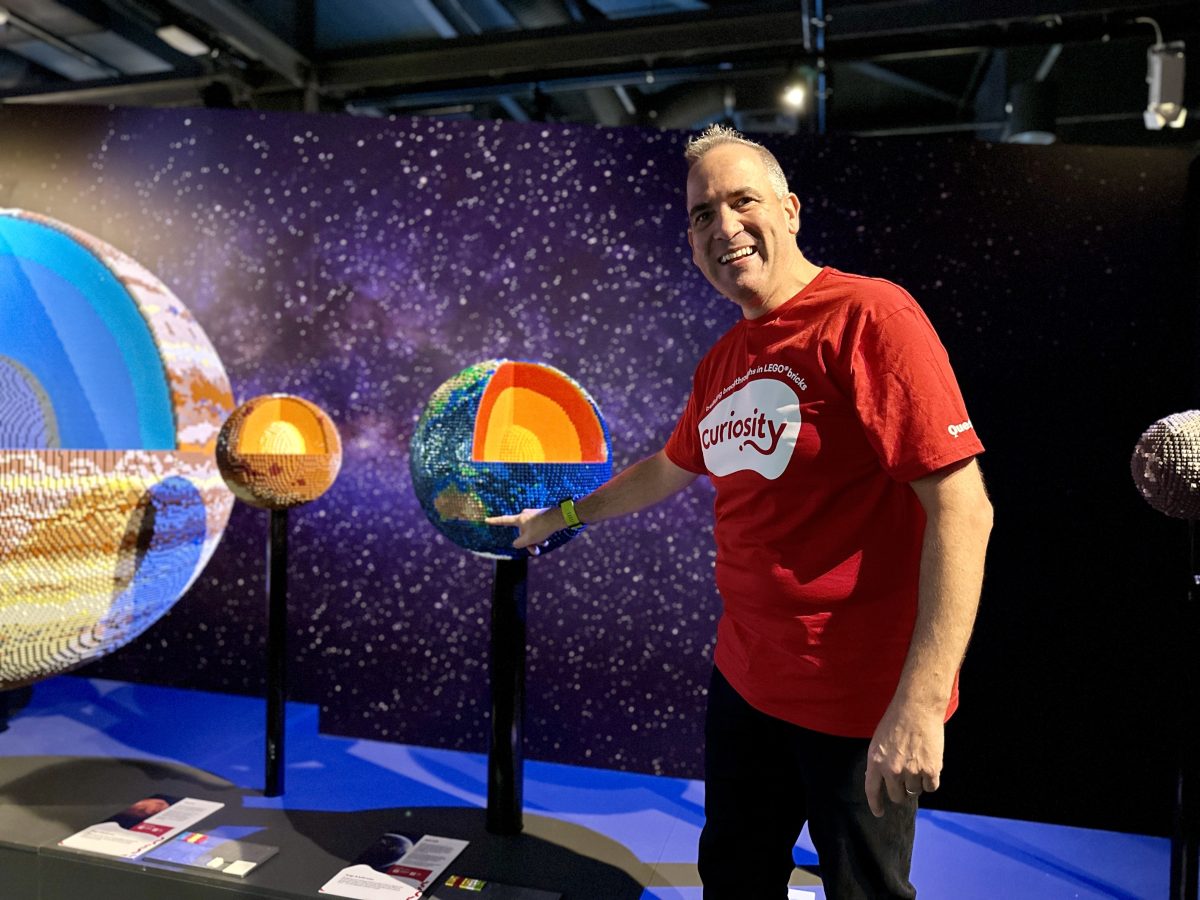
Ryan McNaught, aka ‘The Brickman’, pointing out Canberra on his LEGO Earth. Photo: James Coleman.
Ryan McNaught thought the Mars rover Perseverance was just a dinky little toy. That is, until he had to make a life-size LEGO version.
“When I saw pictures of it on Mars, I was like, ‘Yeah, it can’t be very big’, but that’s because there’s no scale. In real life, when you look at it, you go, ‘Oh my goodness, look how big it is!”
The result, which took 1065 hours to build, now has pride of place in Gallery 1 at Questacon as part of a new world-first exhibition that ties together LEGO and STEM (Science, Technology, Engineering and Mathematics).
CURIOSITY: Building Breakthroughs in LEGO Bricks opened on Saturday (11 May). It was an instant success, and Ryan expects “hundreds of thousands” of visitors to come through by the time the exhibition closes on the same day next year.
Fans of the LEGO Masters TV series will recognise Ryan as ‘The Brickman’, one of only 21 LEGO-certified professionals globally. He and his team of 36 fellow builders in Melbourne literally pieced the exhibition together with more than 1 million bricks and hours and hours of building. They trucked it up to Canberra last week.
“Luckily, they’d fixed all the potholes on the Hume.
“What you’re looking at is the best part of about 5000 hours worth of work,” he adds.
“And 5000 hours means callouses on your fingers – I have the scars to prove it. It involves research, it involves investigation, and it involves the most important word of them all – curiosity.”
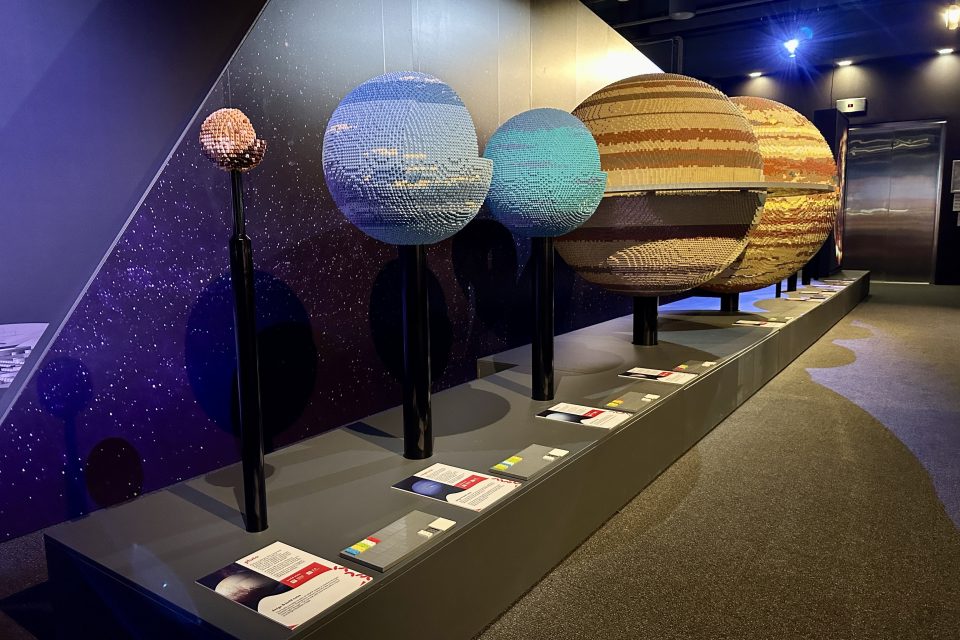
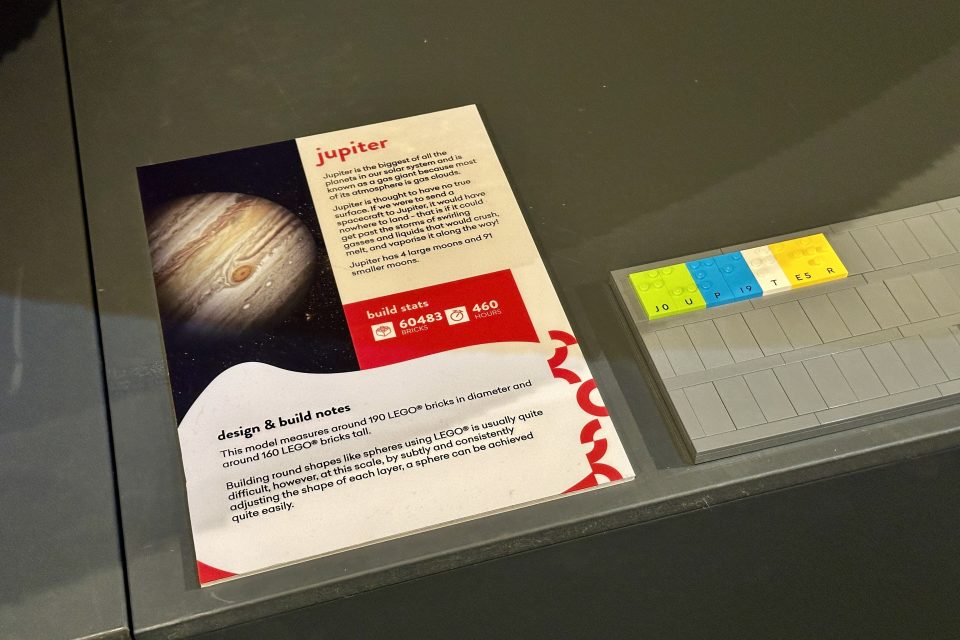
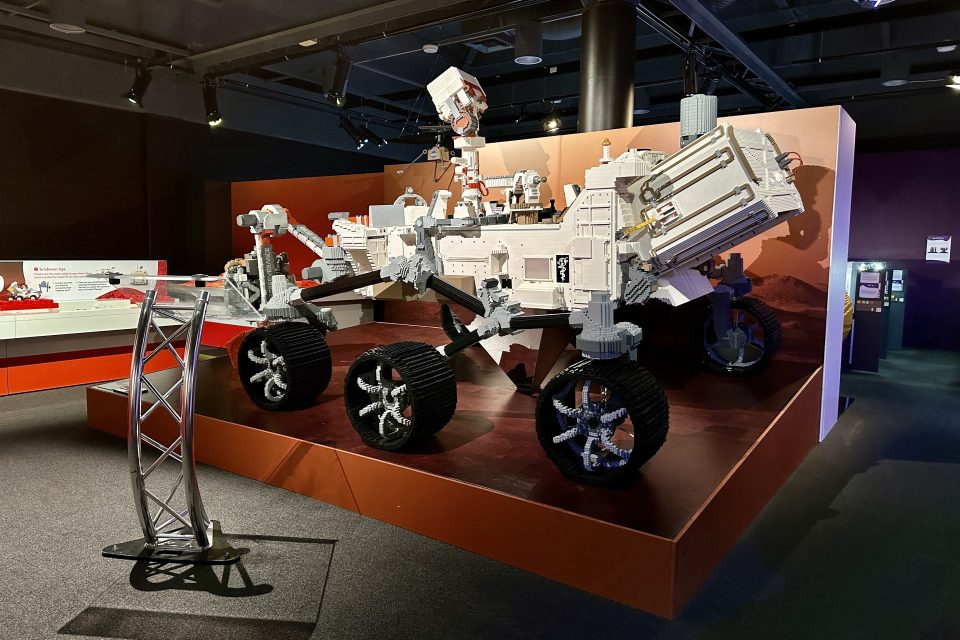
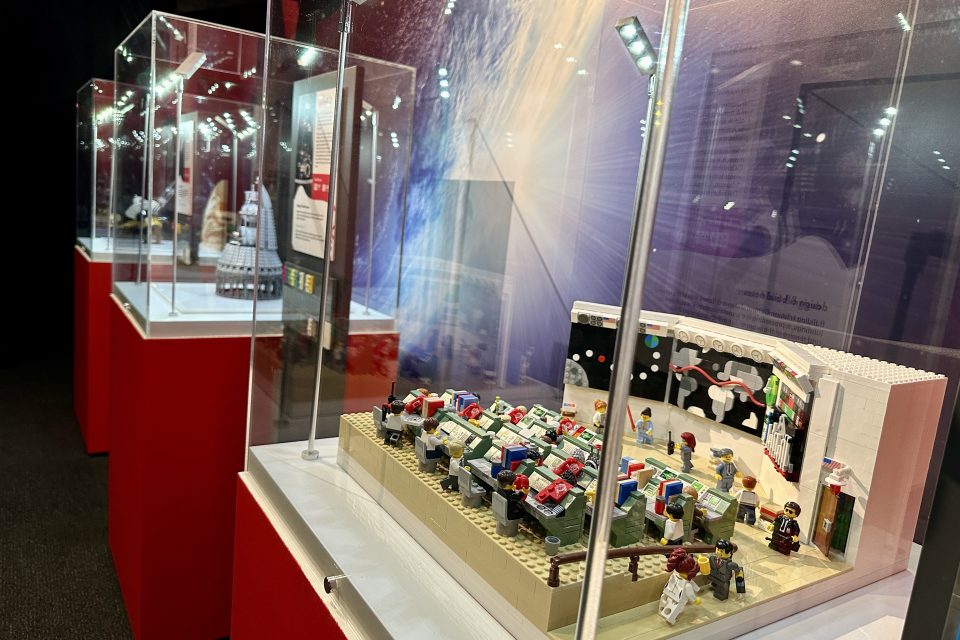
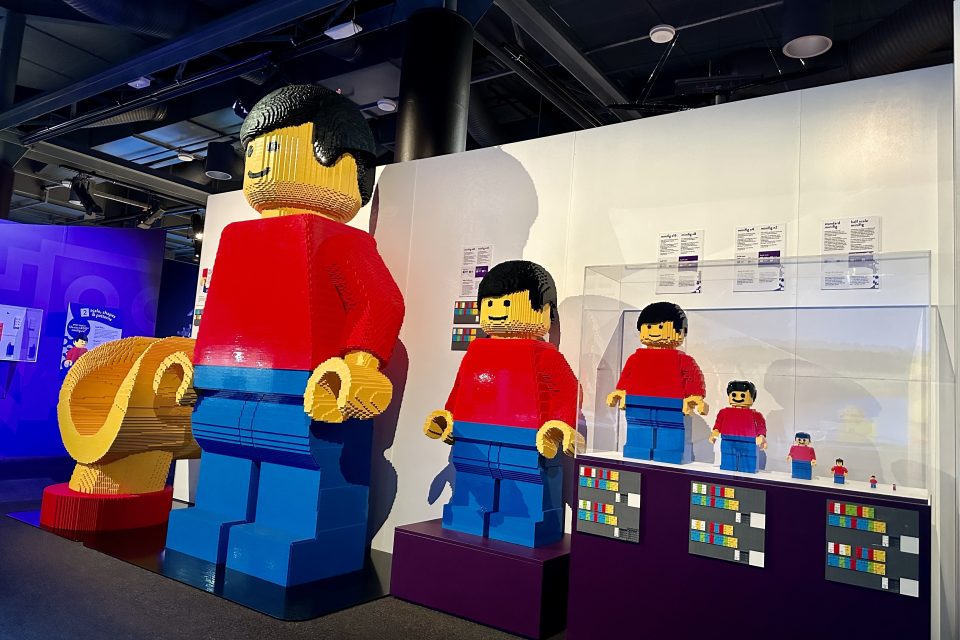
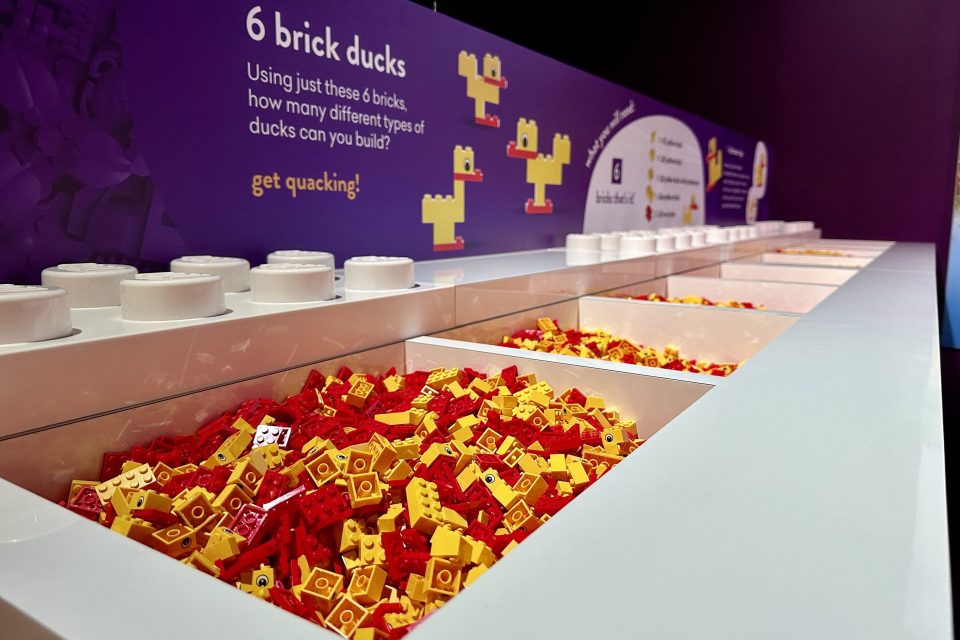
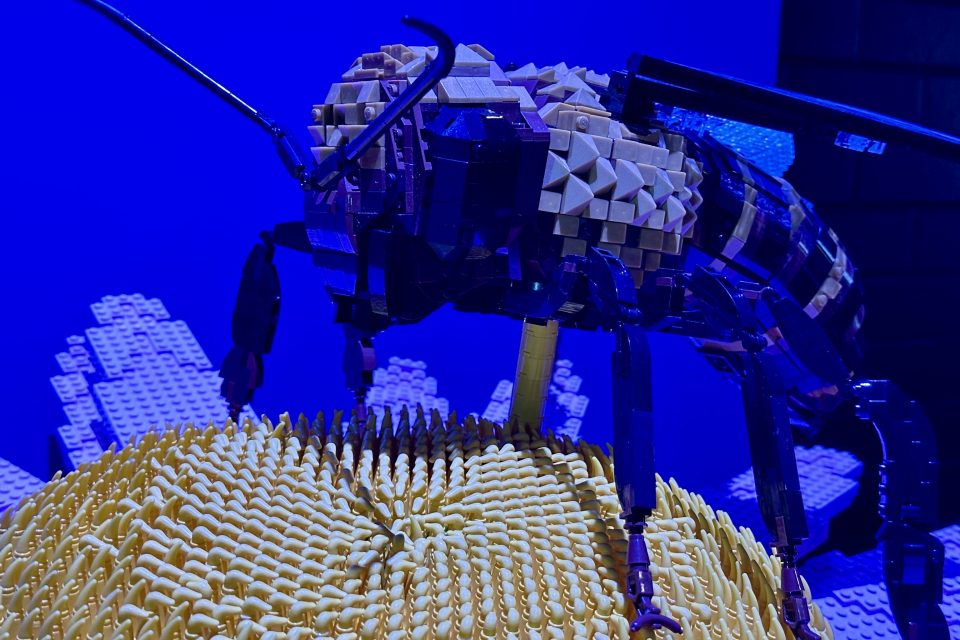
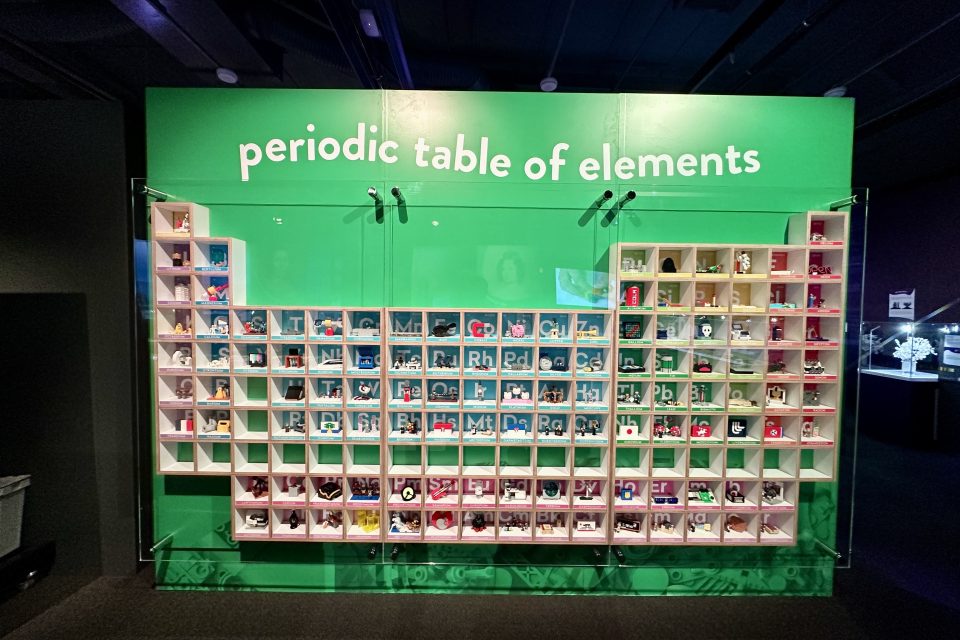
LEGO has been espoused as a valuable educational tool since Kirk Kristiansen patented his “Automatic Binding Brick” in 1949, but Curiosity takes it to a whole new level.
For instance, some very clever people have worked out you can make 658,869,076,800 combinations with six 2×4 bricks of six different colours. A table full of tubs of LEGO bricks invites you to make as many as you can and hit a buzzer on the wall when you’re done to “countdown” the combinations. However, Ryan estimates the exhibition would have to be open for thousands of years for the magic number to ever be reached.

We were sceptical there were that many LEGO brick combinations as well, but the maths maths. Photo: James Coleman.
You can construct your own bridge at another table and various “six-brick ducks” at yet another. The entire solar system has been constructed from LEGO. There’s a row of LEGO minifigures – growing in size – to demonstrate scale and another row of display cabinets celebrating women’s contributions to science. A LEGO periodic table encourages visitors to work out what items are made with each element.
That’s giving enough away.
“I think about when I was in high school and … studied trigonometry,” Ryan says.
“I hated that, and my maths teacher was a lovely man, but it was an uphill battle. I thought I’m never going to use it in real life. This is just a waste of my time. I want to go and kick a footie with my mates. But now I use trigonometry most days. Whether we use it or not, we use STEM on a daily basis. And this exhibition is about … bringing that realisation to the forefront.”
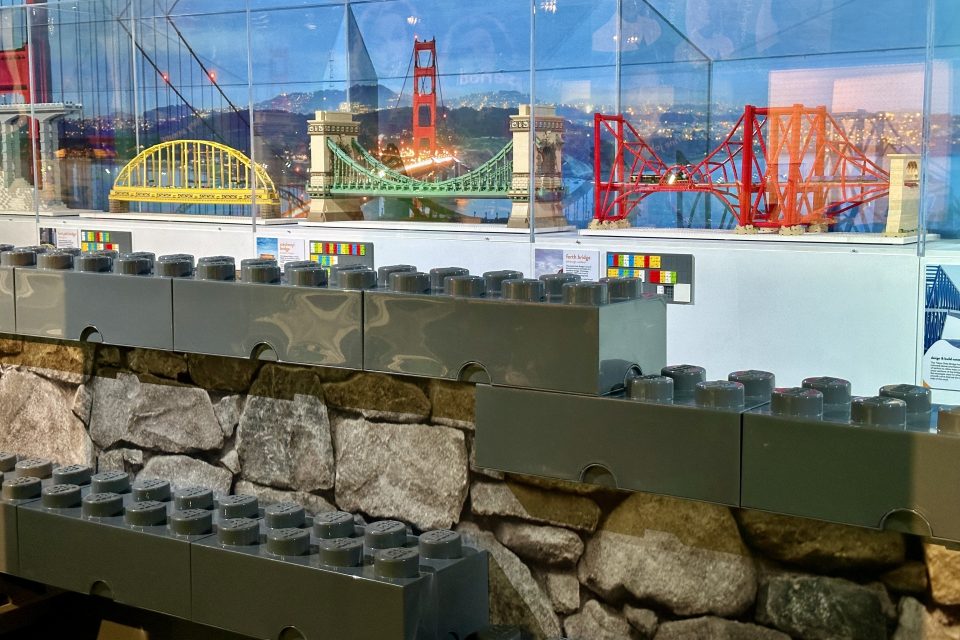
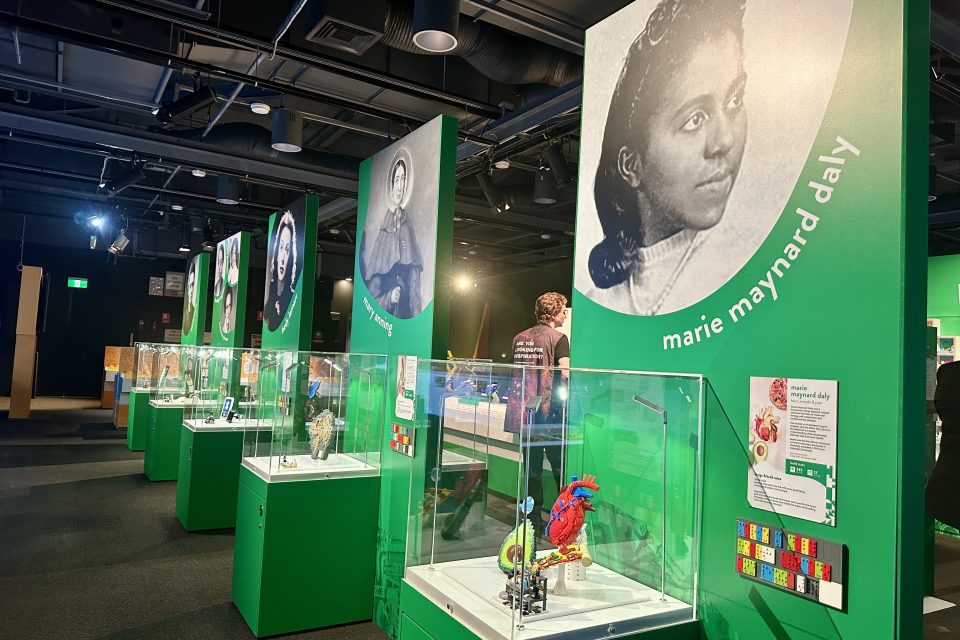
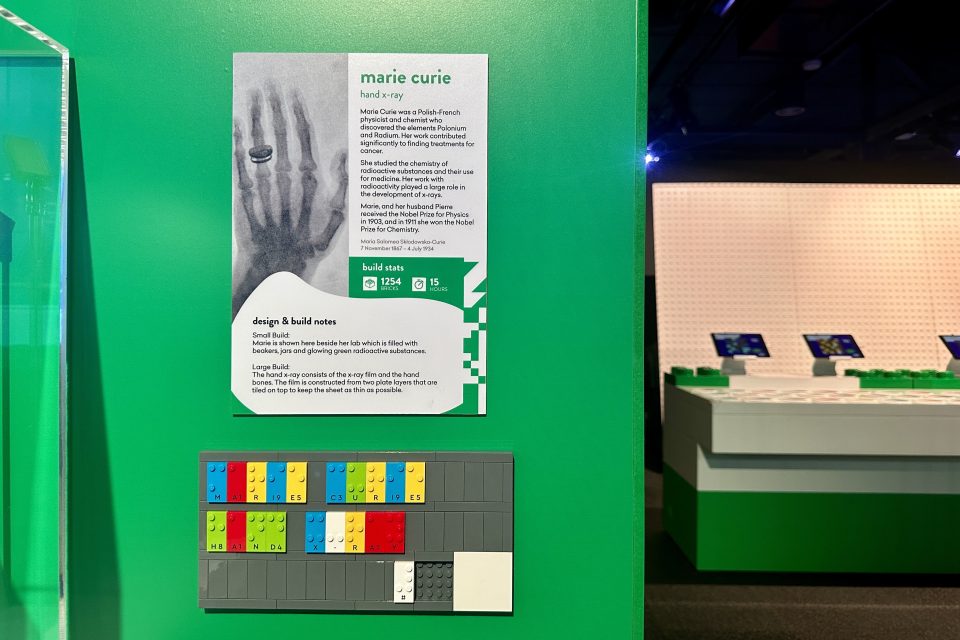
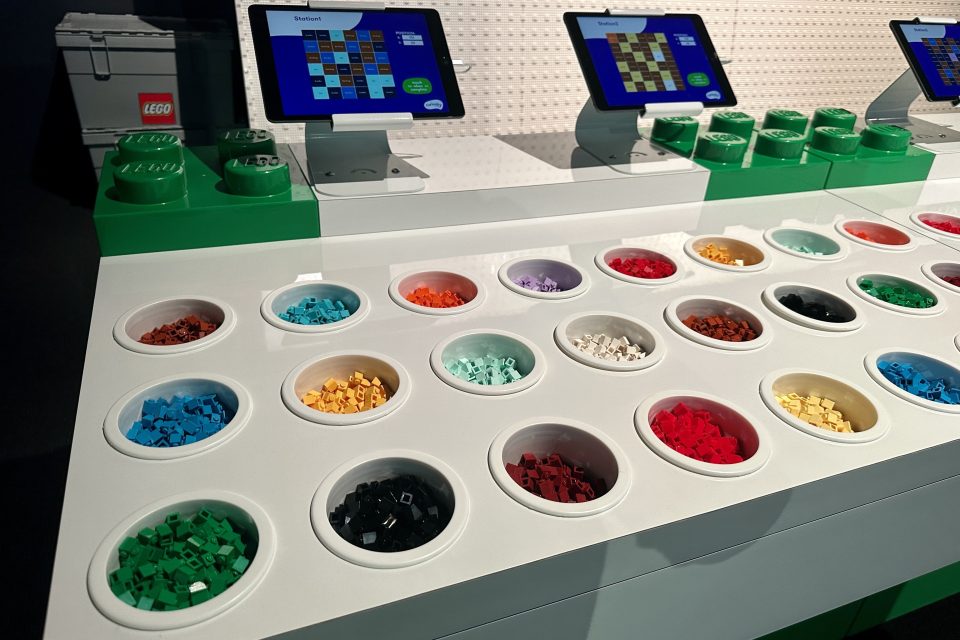
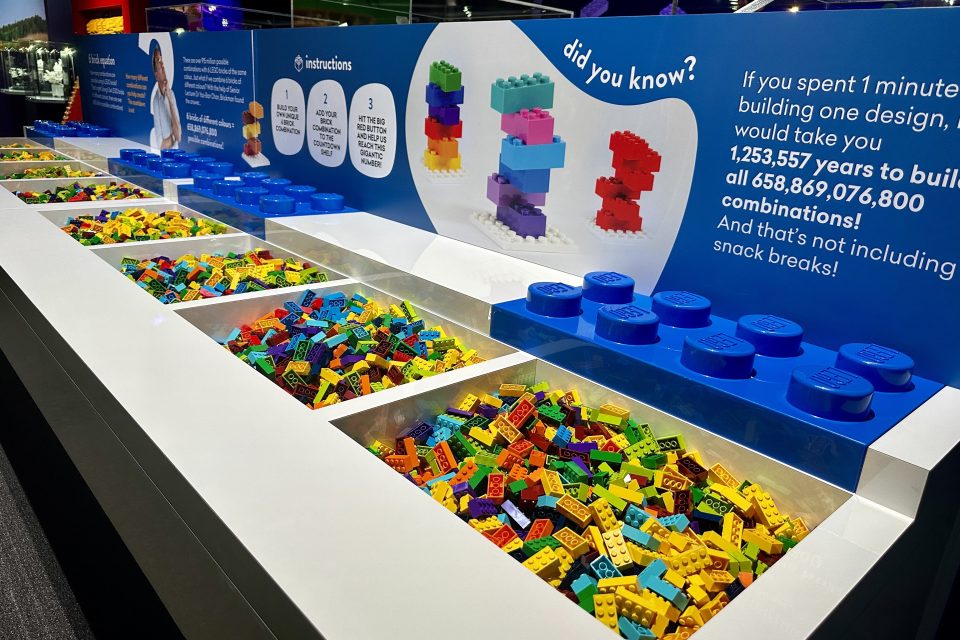
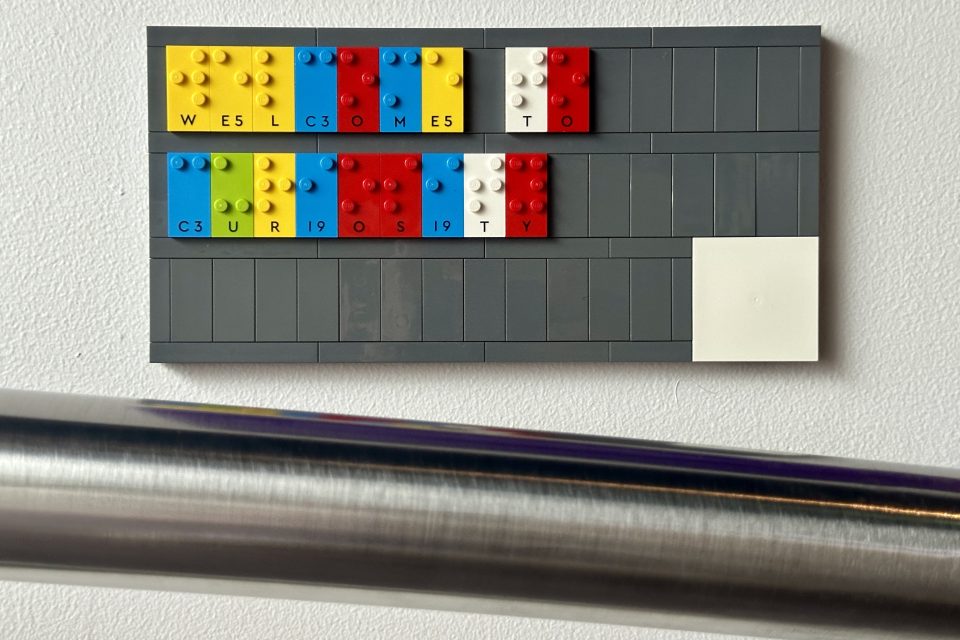
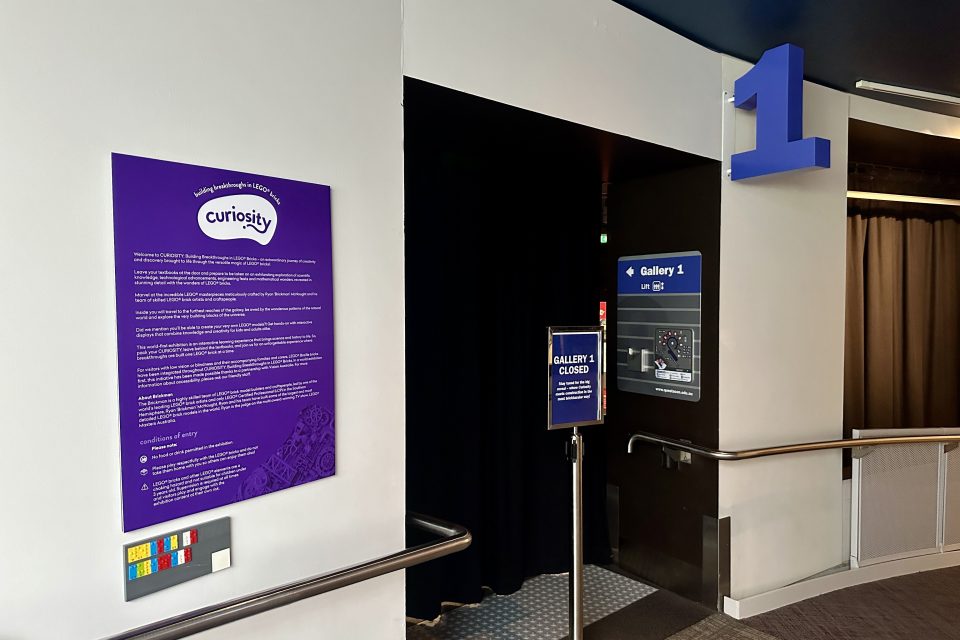

Questacon director Jo White says the best part is kids won’t even know they’re learning.
“With this exhibition, you will learn, but you won’t know it, which is what we love.”
Another world-first aspect of the exhibition is the inclusion of Braille bricks, thanks to a partnership between The Brickman and Vision Australia. Under the description of each piece is a plate of LEGO bricks with different placed studs to spell out the exhibit’s name.
“We’re really keen to promote diversity and accessibility and inclusion, and I’m really proud that this exhibition incorporates the Lego Braille bricks and visitors with low vision and blindness,” Jo says.
Curiosity: Building Breakthroughs in LEGO Bricks is on display at Questacon until 11 May 2025 and is included in general admission to Questacon. Pre-purchasing admission online is recommended.
Original Article published by James Coleman on Riotact.


